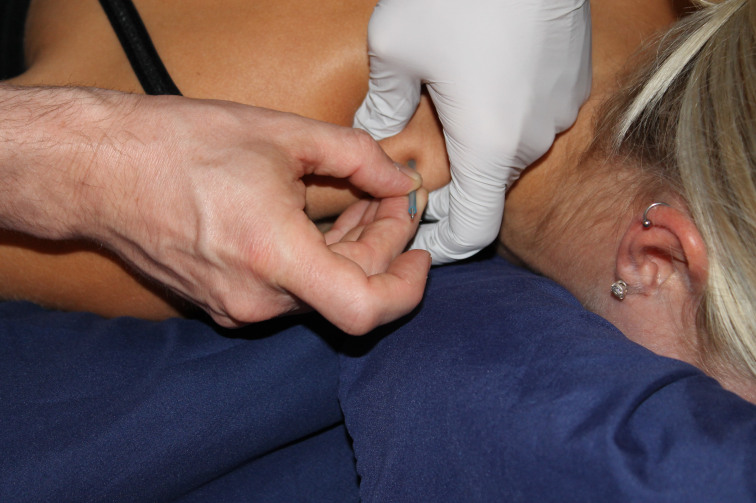When we teach our courses one of the most common questions is about the intensity of needling. Specifically, how much mechanical irritation is needed to relieve a trigger point. This is, of course, a loaded question. There is a great deal of research that is done to try to answer this. The research will also examine whether or not a twitch response is necessary for pain relief. However, in practice, the amount of twitch response varies quite a bit not only from patient to patient but often from the location of the body.
The upper trapezius is a very common area to illicit a large twitch response multiple times. Depending on the severity of the patient’s pain level and their comfort with trigger point needling, the amount of stimulation can greatly differ. If the patient is coming in after an MVA for example, less may very well be more. If the patient is a high-level athlete they may do better with a higher level of stimulation. This can only be assessed after building a relationship with the patient.
So how much stimulation should I use?
If it is the first time a patient is receiving trigger point acupuncture, I highly recommend starting with low to moderate levels of stimulation. It is very easy to increase the treatment intensity the second visit, but it is impossible to take back treatment intensity after the fact. Proper communication with the patient can really help determine the treatment intensity. This does differ from the TCM tonification/sedation methods. We always have patients report back on how they felt afterward and there are two questions that are key:
- How long were you sore?
- How long did you have a decrease in pain?
How long were you sore?
Soreness is common after trigger point needling. Soreness is not pain! The soreness associated with trigger point needling should be likened to that of post work out. If a patient notes an increase in pain or lasting pain, then decreasing mechanical stimulation or utilizing more superficial fascial needling may be indicated. Manual therapy can also greatly help patients that have an increase in pain from needling.
How long did you have a decrease in pain?
This question serves two purposes, and one of those is to see if an increase in stimulation is indicated. If the patient noted little to no soreness and only a brief or no relief, increasing stimulation can be indicated. This question can also indicate treatment frequency for the patient. It is very common to have trigger point needling patients come in for shorter intervals at the beginning such as twice a week for two to four weeks depending on the condition or whether or not they are seeking care with other providers.
One of the other major concepts to get across to patients is that less can be more. While we are going for a twitch response we don’t want the patient to be in pain. More often than not, a twitch response isn’t particularly painful, it is just a new sensation. If the patient is associating pain with a particular trigger point being needled it shouldn’t necessarily be a grin and bear it situation. That is why communication is key. In my opinion, communication during the needling process of trigger points is more interactive than that of needling acupuncture points with therapeutic properties. If we can communicate the goals of needling with the patient, then needling intensity can be better attained creating more positive treatment outcomes.


Comments are closed.